
For the millennial cricket fan, one of the chief talking points in the lead up to any edition of the World Cup are the team kits to be sported by the participant teams. It was truly the 1992 edition of the quadrennial showpiece that coloured kits were elevated to normalcy from the aberrations of World Series Cricket and day-night ODI tournaments in Australia, and ever since, it has been a vibrant evolution for jerseys in the ever-growing universe of the sport.
Until the recent years. There was a time when there would be a sense of curiosity before the commencement of any bilateral series or multilateral tournaments (at least when such affairs involved day-night games before the red ball was banished from limited overs cricket) regarding the frequent changes in kit design. The patterns have stabilized, with less and less radical changes coming in the last decade and a half with long-running arrangements between teams and respective kit manufacturers.
What has been completely at loggerheads with the original fetishization of coloured kits is the unfortunate saturation of the hues donned by different teams. If the idea behind adopting Kerry Packer's innovation was to present a pluralist aesthetic for the viewer in emulation of other team sports, chiefly football, the current lot is a rather bland expression of it.
Right now, there are seven teams in the top ten qualifiers for England & Wales 2019 that don nearly indistinguishable shades across a couple of base colours. While Afghanistan, England, India and Sri Lanka have their ODI kits entrenched in a very narrow spectrum of blue (the pool of monotony only widens if we look at Associate teams on the brink like Scotland and Nepal), Bangladesh, Pakistan and South Africa sport their primary hues on the deeper side of green (with Ireland's current departure from their fluorescent shades worsening this pot). This gravitation towards homogeneity is exactly what the nostalgic minimalism of the 1992 World Cup kits had promised against.
A case for 'away' kits
Question is, what can be done about it? Fortunately, the solution lies in something not too radical to experience - away kits, something that is considered essential in other team sports. Australia has toyed with different coloured kits for home and away, switching to the dominantly secondary colour in green as their primary colours on several occasions. The inversion of colours has also been a popular practice - of which Australia, England and West Indies are the most common exponents - as a manner of distinguishing between ODI and T20I kits.
The most definitive experiment in this direction was done during the Champions Trophy in 2017, when three of the eight participating teams - Bangladesh, Sri Lanka and South Africa - came into the tournament with two sets of kits each. This was after the 2016 World Twenty20 paving the way, with Bangladesh, Scotland and Sri Lanka going in with 'clash kits'.
Is it possible to regularise a regime of differential colour combinations as a matter of policy? A sudden change in favour of aesthetic variety may not actually be received by fans, who are entitled to attach immense cultural identification with the primary colours sported by the teams they support.
While fair compromises may be accommodated in bilateral encounters between teams with kits sharing similar primary colours where the hosts would enjoy the preference in retaining their primary colours, multilateral affairs - no less the World Cup - would call for a standardised formula for such determinations when teams match up at neutral venues.
A possible solution to such conundrums could lie in awarding preference to the higher ranked team on the day of contention, which would also add a nice visual measure to the International Cricket Council’s ranking system.
A little too late for the World Cup, but...
A hypothetical exercise of applying these principles to the upcoming World Cup might put the theory to test. The fact that all participants face one another in an epic round-robin stage only serves to enliven our imagination in this endeavour.
For the moment, the focus must undoubtedly be on breaking the blue and green deadlocks, as observed earlier. Let us first identify the 'away' colours for each of these teams (on the assumption of retaining the status quo in primary colours for 'home' kits, placing them in order of present ODI rankings:
England
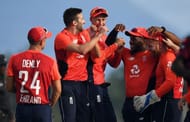
This one is easy considering how accustomed we have become in seeing them in the red T20I kit. The fans would hardly bat an eyelid if it crossed over to ODIs, a la 'away' kits for the English football team.
India
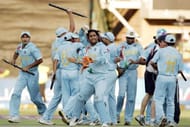
Call me biased, but it is impossible to imagine the Indian jersey in anything but blue. It would be outrageous to suggest a switch to orange - the closest to a secondary to the twin shades of blue in the last update to the jerseys. However, restoring the lighter shades of blue from Nike's pre-2009 exploits would do a magnificent rescue job as a base for the 'away' kit, and would prove a marked contrast from the blues worn by Afghanistan, England and Sri Lanka.
South Africa
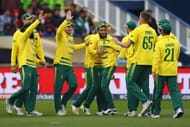
Following England's instance above, the yellow kit for the T20Is appears to be the automatic alternative. Yellow kits have been priorly designed for the ODI team in the 2017 Champions Trophy, which they donned for their encounter against Pakistan.
Pakistan
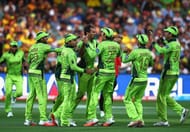
Throughout their history in white ball cricket, Pakistan have intermittently switched back and forth between banana leaf shades and starkly deeper variants of green. In an event where the latter forms the primary colour of their kit, a jersey based in light green, as exhibited in the 1992, 1999 and 2015 editions of the World Cup, should be the ready alternative.
Bangladesh
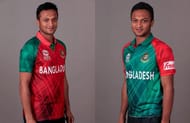
They have already shown envious zeal in bringing clash kits into major tournaments like the 2016 World T20 and 2017 Champions Trophy. Red has predictably provided their dominant green base with the ideal change this time, as can be seen in their jerseys unveiled for the World Cup.
Sri Lanka
Like Bangladesh, they have experimented with yellow as their 'away' kit base for the 2016 World T20 and 2017 Champions Trophy, and there is no reason why Sri Lanka should not continue with the same option for ODIs.
Afghanistan
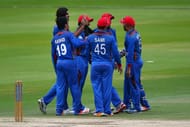
Their penchant for brilliant streaks of red on their jerseys, caps and helmets makes the case for adopting the same as their base for an alternative kit.
In the most immediate hypothetical context of the World Cup, thus, England would enjoy the twin advantage of being the host and the top ranked team, meaning that there would be no practical need for a switch kit for them just yet. As the second ranked side, applying the suggested formula, India would require the light blue kit for their England encounter. Consequently, Sri Lanka would resort to their yellow kit in their clashes with England and India, where as Afghanistan would have to go with their reds for their matches against these three teams.
Bangladesh, being the lowest ranked team of the green brigade, will most probably don the red kits versus Pakistan and South Africa in the World Cup. On the other hand, the kits unveiled by South Africa sport a decidedly lighter green compared to the kits last worn by them in ODIs. This would absolve Pakistan from any onerousness of adopting alternative attires.
Follow IPL Auction 2025 Live Updates, News & Biddings at Sportskeeda. Get the fastest updates on Mega-Auction and cricket news
